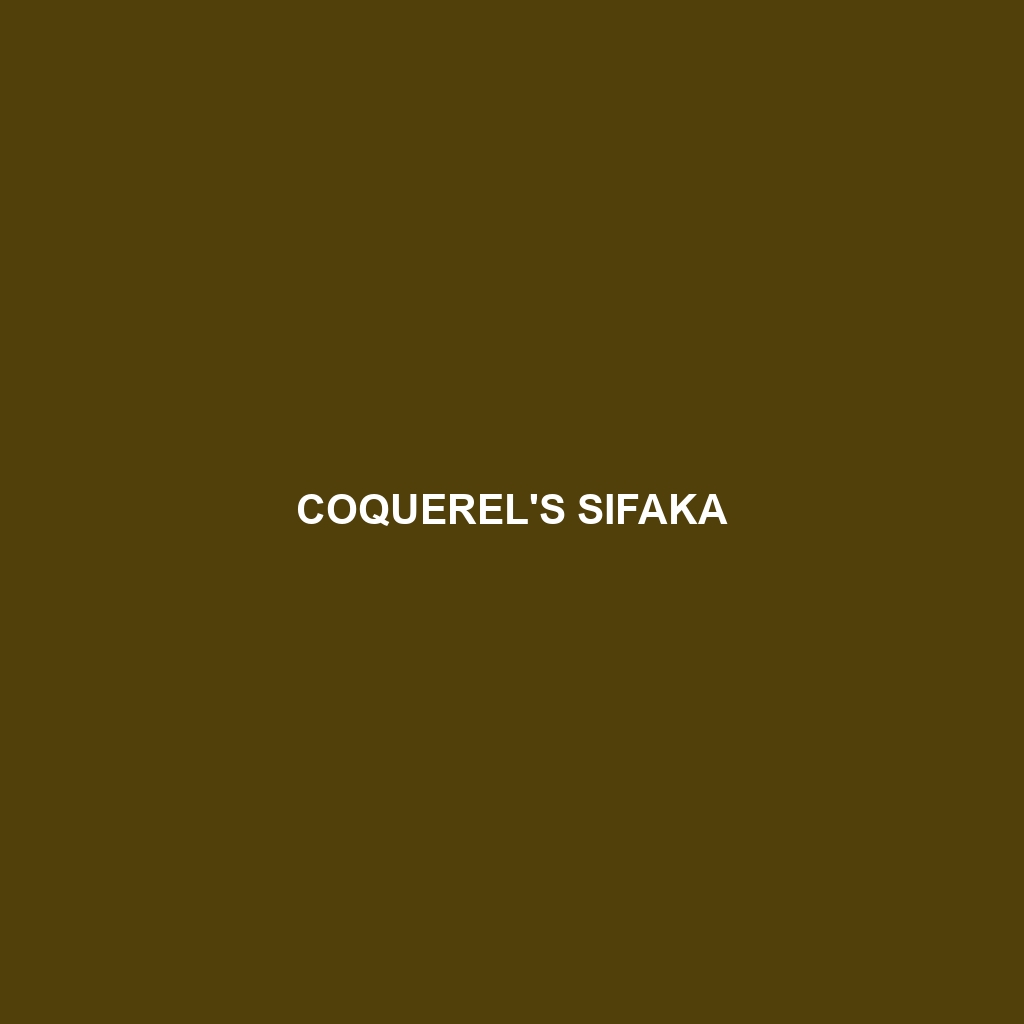Coquerel’s Sifaka
Common Name: Coquerel’s Sifaka
Scientific Name: Propithecus coquereli
Habitat
Coquerel’s Sifaka is primarily found in the dry deciduous and spiny forests of Madagascar, specifically in the Northwest region of the island. This species thrives in habitats characterized by tall trees and varied vegetation, showcasing a strong preference for areas rich in plant biodiversity. They are often spotted in the Ankarafantsika National Park and surrounding reserves, reflecting their specialized living conditions within Madagascar’s unique ecosystems.
Physical Characteristics
Coquerel’s Sifaka is a medium-sized lemur, with adults weighing around 4 to 8 kilograms (9 to 18 pounds). They exhibit a distinctive appearance with a mainly white body, contrasted by a black face, and brownish-gray patches on their sides. Their long, powerful legs enable impressive leaps between trees, reaching distances of up to 10 meters (33 feet). Notably, their large, expressive eyes give them an engaging and endearing look, which captivates wildlife enthusiasts.
Behavior
This species is known for its remarkable social structure, living in groups of 2 to 10 individuals. Coquerel’s Sifakas are diurnal (active during the day) and spend most of their time foraging and socializing. They are famous for their unique “vertical clinging and leaping” locomotion, which aids in navigating their arboreal environment efficiently. These sifakas also engage in distinct vocalizations, communicating with one another through a variety of calls that serve different social functions.
Diet
Coquerel’s Sifaka primarily consumes leaves, fruits, and flowers, showcasing a herbivorous diet that reflects their adaptation to folivorous feeding. They favor species such as Madagascar’s tamarind and baobab trees, which provide essential nutrients. Their feeding habits emphasize the importance of maintaining healthy forest ecosystems, as their foraging behavior encourages seed dispersal and plant growth.
Reproduction
Reproduction among Coquerel’s Sifaka typically occurs during the southern hemisphere’s spring months, between September and December. Following a gestation period of approximately 4.5 months, females usually give birth to a single offspring. These young sifakas are born with their eyes closed and depend entirely on their mothers for nourishment and protection during their early months, gradually becoming more independent as they mature.
Conservation Status
Currently, Coquerel’s Sifaka is classified as Endangered on the IUCN Red List, primarily due to habitat destruction from deforestation and agricultural expansion. Conservation efforts are crucial to preserving their populations and the unique biodiversity of Madagascar’s ecosystems.
Interesting Facts
Coquerel’s Sifaka is often referred to as the “dancing lemur” due to its unique way of moving. When on the ground, they perform a series of jumps that resemble a dance, making them particularly fascinating to observe. Additionally, they are known for their strong social bonds, often grooming one another, which reinforces group cohesion.
Role in Ecosystem
Coquerel’s Sifaka plays a significant role in its ecosystem by acting as a seed disperser. Their feeding habits contribute to forest regeneration and biodiversity. The presence of this species can indicate the health of their habitat, making them essential for ecological monitoring and conservation practices.
